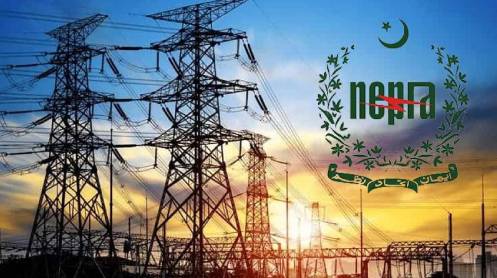Pakistan can’t win for losing. The South Asian country of over 230 million people was already hit by a perfect storm of economic and political difficulties this year; it has now been devastated by the most severe and catastrophic flooding in recent memory.
Over 1,400 people and 800,000 livestock have died, about 1 million homes have been destroyed, and more than 33 million people have been adversely impacted by the floods. One-third of the nation is underwater right now, and the government forecasts an economic impact of more than $10 billion due to these floods.
These shocking facts and staggering expenditures associated with rehabilitation exemplify what a climate catastrophe looks like at 1.2-degree Celsius of global warming since industrialisation.
However, recent geopolitical developments show that global warming will likely surpass 3.5-degree Celsius. Developed countries reneging on their climate obligations is one of the significant fallouts of the Russia-Ukraine conflict, resulting in fresh investments in oil and gas, which Climate Action Tracker says might lock the globe into “irreversible warming.”
The IPCC estimates that the world has become so hot that its temperature will likely exceed the limits suggested by the Paris Accord, and “deadly weather is already baked into our imminent future.” For Pakistan, the situation is significantly worse since it is situated in a region where average temperatures are projected to rise faster than anywhere else in the world, by almost 4-degree Celsius by 2100.
It is too early to tell how much of these floods were caused by global warming, but it is reasonable to assume that climate change was a significant contributing factor. While several factors might set off floods, human-caused climate change, ensuing extreme precipitation, and glacier retreat have increased the frequency and severity of South Asia’s monsoon seasons in recent years.
What the UN Secretary-General Antonio Guterres refers to as a “monsoon on steroids” is only one among a succession of extreme weather events that have struck Pakistan. Over the last few decades, severe weather in Pakistan has become the norm rather than the exception. The other, often disregarded, factor is social engineering. Pakistan is highly vulnerable to climate change consequences due to widespread deforestation, unregulated urbanisation in flood-prone regions, soil erosion, and inadequate investment in mitigation and adaptation.
In the case of Manchar Lake, studies show that water and vegetation rates have dropped annually since the early 2000s due to unplanned growth, decreasing precipitation, and anthropogenic activities leading to increased dry land.
A pre-independence breach created to prevent lake overflow had been filled in recent years. Consequently, a similar breach had to be made by authorities on September 4, 2022, displacing over 135,000 people and affecting 400 settlements. It is plausible to argue that this low resilience is partially the consequence of poor governance and the country’s failure to effectively equip itself to meet the challenges of frequent climatic extremes.
However, the issue extends beyond ineptitude and lack of political will. Adapting to climate change is exceedingly costly, especially for a developing country like Pakistan, which is already burdened with innumerable economic issues. Pakistan simply lacks the budgetary flexibility to pay for a significant decrease in climate vulnerability.
The evident injustice of the climate problem, which is pressing down on nations that have traditionally had the least contribution to its cause, has sparked debates over who should bear the expenses associated with the crisis. Pakistan contributes less than 1% of the global-warming gases but ranks eighth on the list of countries most at risk from the climate crisis.
Sherry Rehman, Federal Minister for Climate Change, recently said, “There must be some level of climate equation so that the brunt of the irresponsible carbon consumption is not laid on nations near the equator which are unable to create resilient infrastructure on their own.”
At the Conference of Parties’ international climate talks in Egypt this November, Pakistan should make a compelling case for why developed countries should admit their mistakes and meet their 2010 promise to mobilise $100 billion per year in climate finance for the developing world by 2020.
They have failed to increase resource transfers for adaptation, which accounts for just 10% of total climate funding. They have also refused to pay impoverished and vulnerable countries for loss and harm primarily caused by them.
Pakistan has executed six preparedness actions and four projects via the Green Climate Fund (GCF), two on mitigation and two on adaptation, totaling around $135 million.
These include the ‘Pakistan distributed solar project,’ ‘Transforming the Indus basin with climate resilient agriculture and water management,’ ‘Green BRT Karachi,’ and ‘Scaling-up of glacial lake outburst flood risk mitigation in Northern Pakistan.’
However, a shift towards greater integration with green infrastructure and nature-based solutions is required, which will improve water management by incorporating ecosystem-based ‘green’ adaptation measures with ‘traditional’ grey infrastructure for flood control and irrigation, supported by enhanced technology, climate-informed planning, and capacity development.
These include initiatives including mangrove and wetland restoration, absorbent urban surfaces, sponge cities, urban aquifers, ecosystem-based adaptation to promote climate resilience, enhanced early warning systems, and sustainable agriculture.
Even though GCF was founded on the premise that present climate financing was inadequate to shift global economic development to more sustainable pathways, a greater amount of financial support is still required to have a significant effect.
Co-financing has, therefore, become an integral component of GCF project planning. However, impoverished nations continue to confront challenges in obtaining GCF assistance, either in part or whole.
Because of this, as well as the inadequacy of adaptation finance and the failure of GCF finance allocations to target vulnerable regions and countries, the GCF’s commitment to supporting local adaptation has been replaced by processes that prioritise (inter)national institutions with limited capacity, experience, and capacity to achieve locally led adaptation and deliver finance at the local level.
The GCF process should be simplified since it may take up to four years to initiate projects, which is too protracted for essential requirements such as flood defences. In addition, the fund’s conditions are frequently unattainable.
If there was ever a moment when the developed world needed to live up to the demand to “DO MORE!” it is right now. After all, as the epitaph goes, “As you are, I was. As I am, you will be.”
The writer is an energy expert, passionate about sustainable energy consumption and climate change





